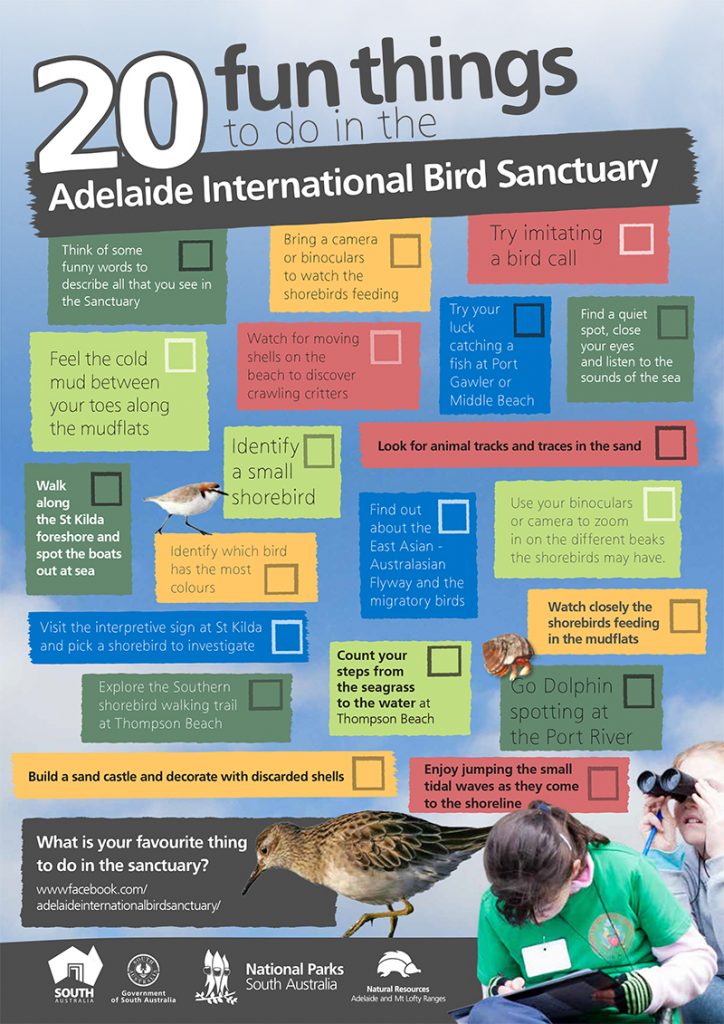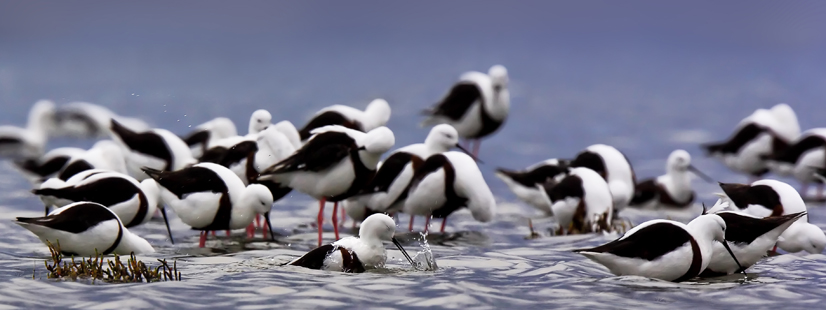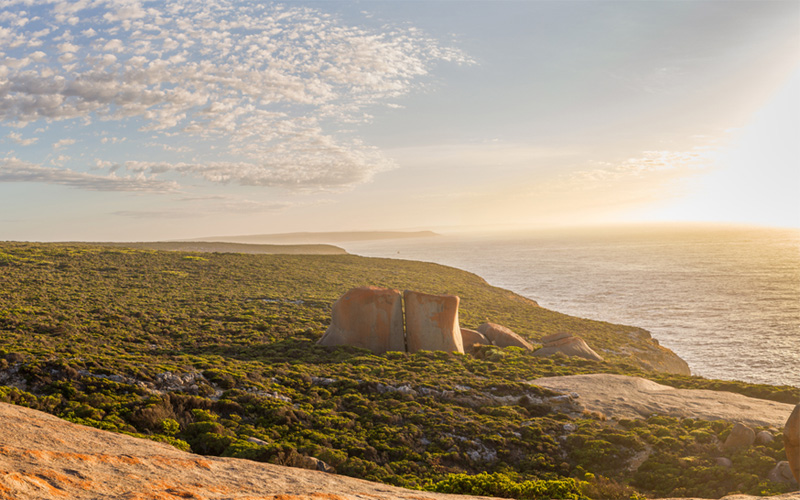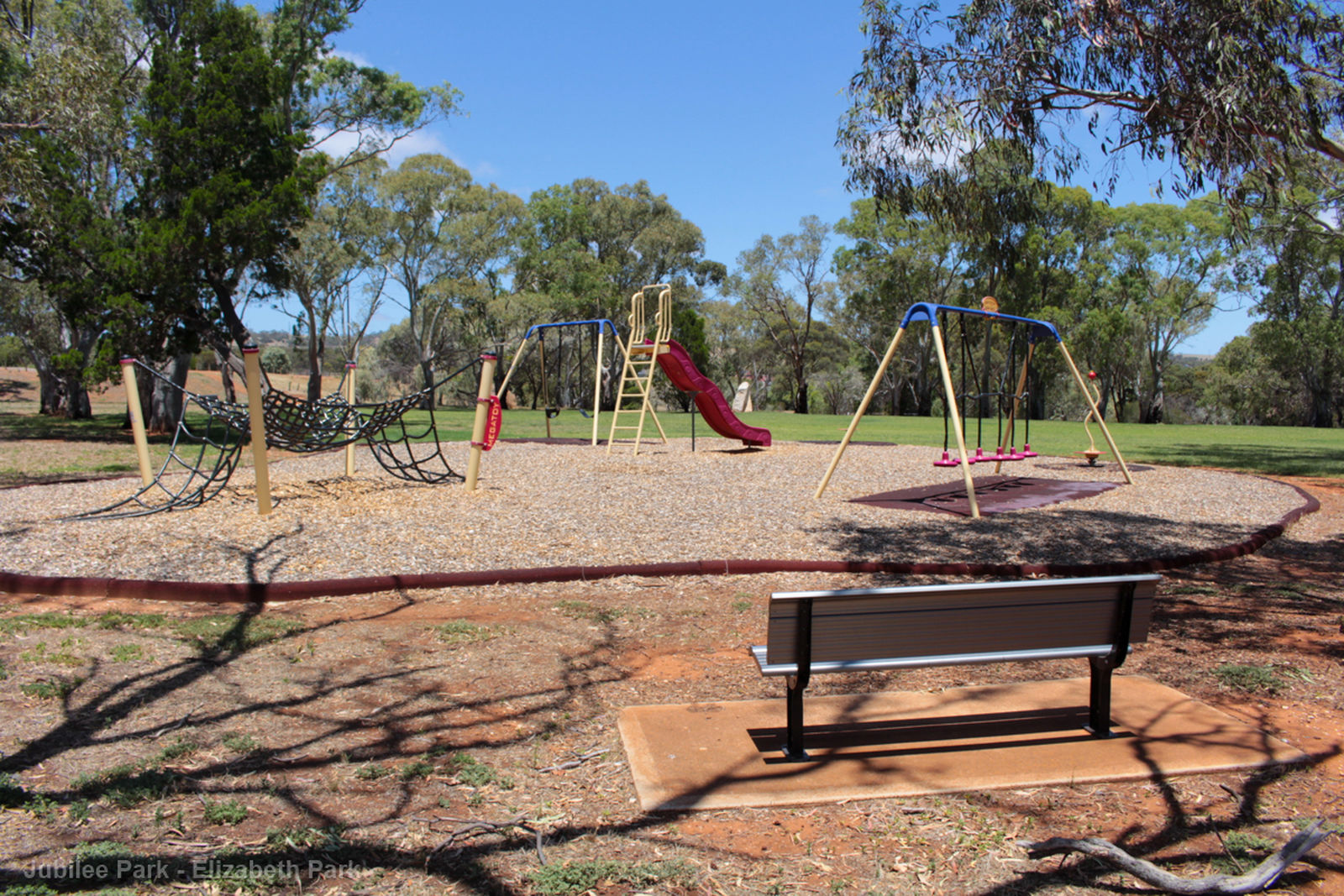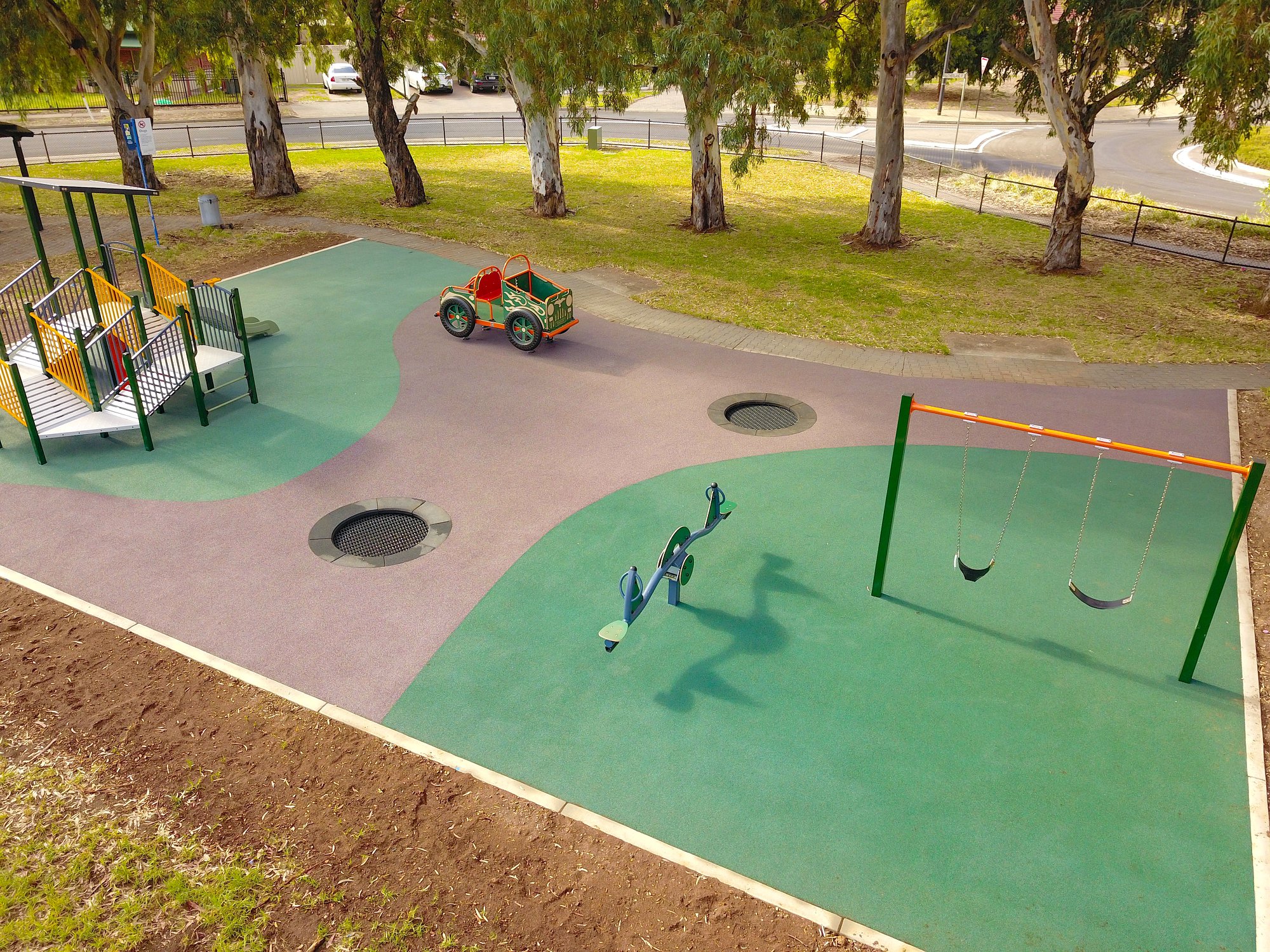If you love bird watching the Adelaide International Bird Sanctuary presents an exciting opportunity to explore and appreciate birds in their natural habitat.
According to the Parks SA website:
“The Bird Sanctuary encompasses over 60km of coastline north of Adelaide, adjacent to Gulf St Vincent, Adelaide’s northern suburbs and spans across four local council areas. Within the bird sanctuary sits the Adelaide International Bird Sanctuary National Park – Winaityinaityi Pangkara. Winaityinaityi Pangkara means ‘a country for all birds and the country that surrounds these birds’ in the language of the Kaurna people.
The Bird Sanctuary sits right at the southern end of the East Asian-Australasian Flyway (EAAF) and is one of the key feeding and roosting sites for migratory birds who use the flyway each year. Birds fly from as far as Siberia and Alaska, passing through 22 countries. The area acts as a crucial habitat on this migratory route which is used by more than 5 million birds a year, 27,000 of which call Adelaide International Bird Sanctuary home.
Whilst being one of Adelaide’s longest continuous conservation areas, the Bird Sanctuary is home to 263 unique fauna and flora species. In particular, the Bird Sanctuary helps protect resident and migratory shorebirds, including threatened species such as Curlew sandpiper, Ruddy turnstone, Red knot and Eastern Curlew as well productive mangroves, marine and coastal assets, river systems and many significant terrestrial species and ecological communities.”
Opening Hours
Open 24 hours a day, seven days a week.
This park is closed on days of Catastrophic Fire Danger and may also be closed on days of Extreme Fire Danger.
Location
The southern gateway of the Sanctuary, located at the St Kilda foreshore, is only a 30 min drive from Adelaide. The northern gateway, at Thompson Beach is situated on some of Adelaide’s pristine coastline featuring samphire and intertidal mudflats.
Access to areas of the sanctuary outside of the approved track network is not permitted.
Dogs are welcome in this park.
Please ensure you:
- Keep your dog under control and on a lead no more than two metres in length.
- Stick to designated walking trails.
- Bring disposable bags to clean up your dog’s faeces (please be aware there are no bins in national parks).
Environment SA’s Dedicated Web page
